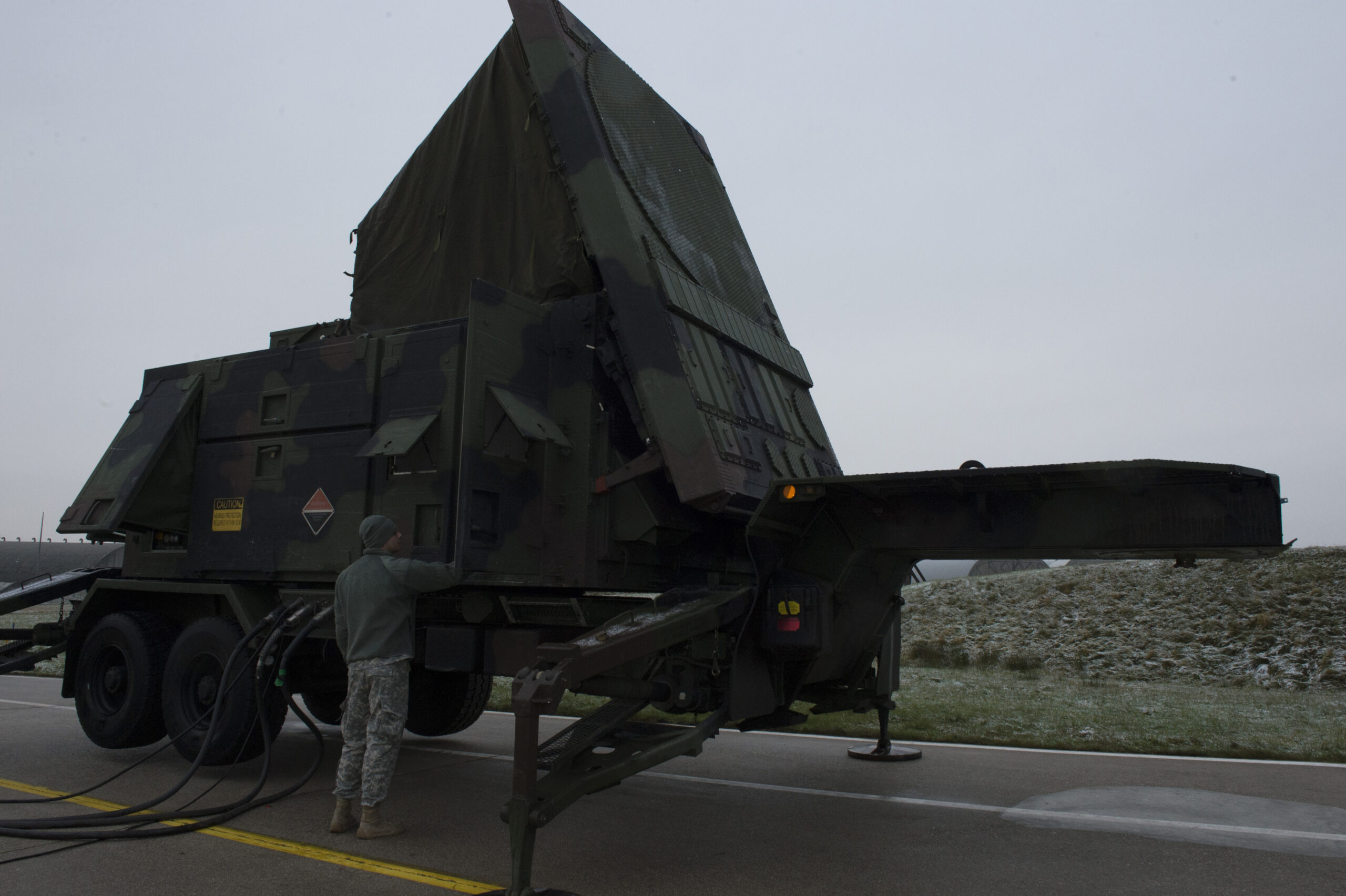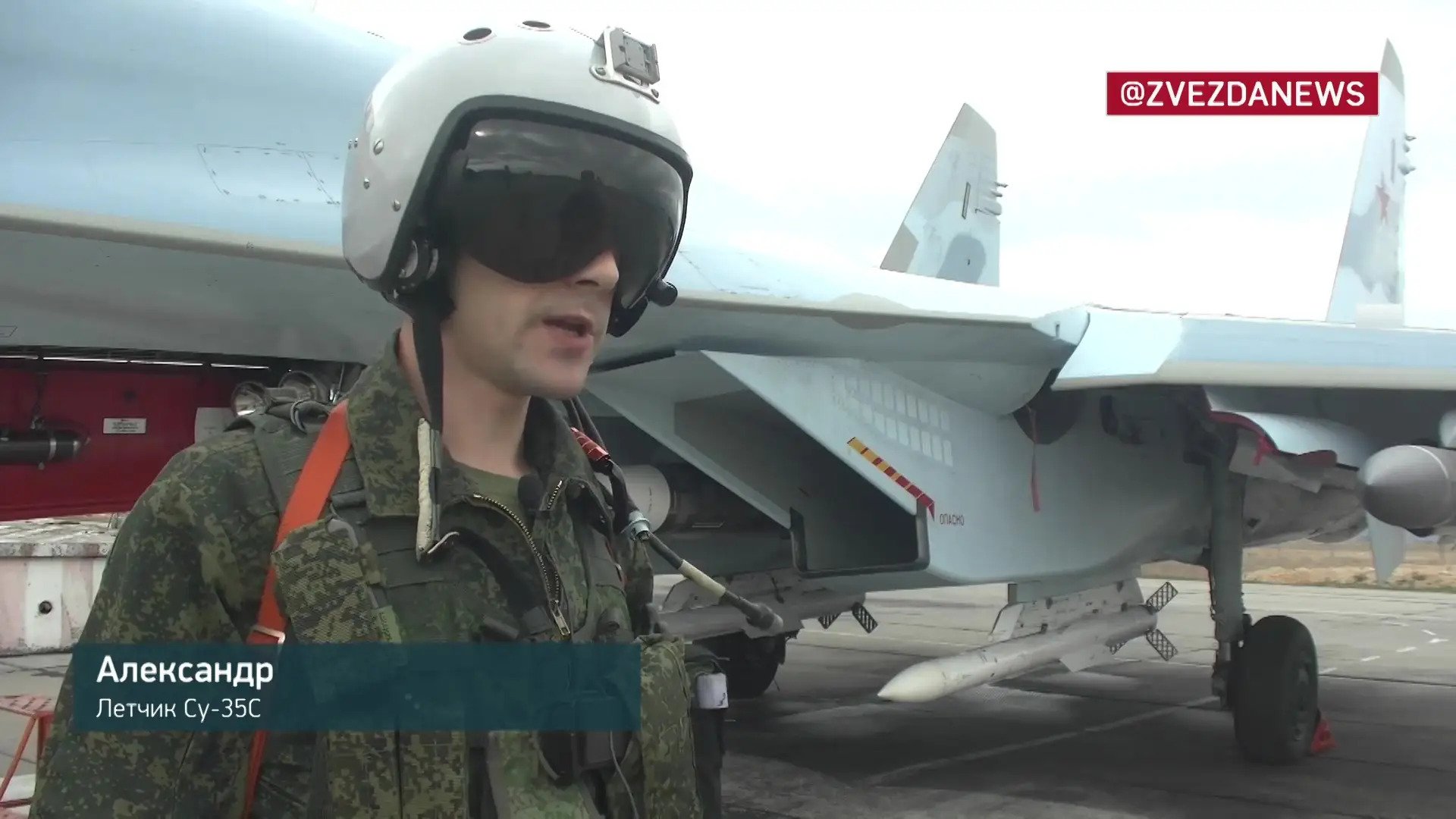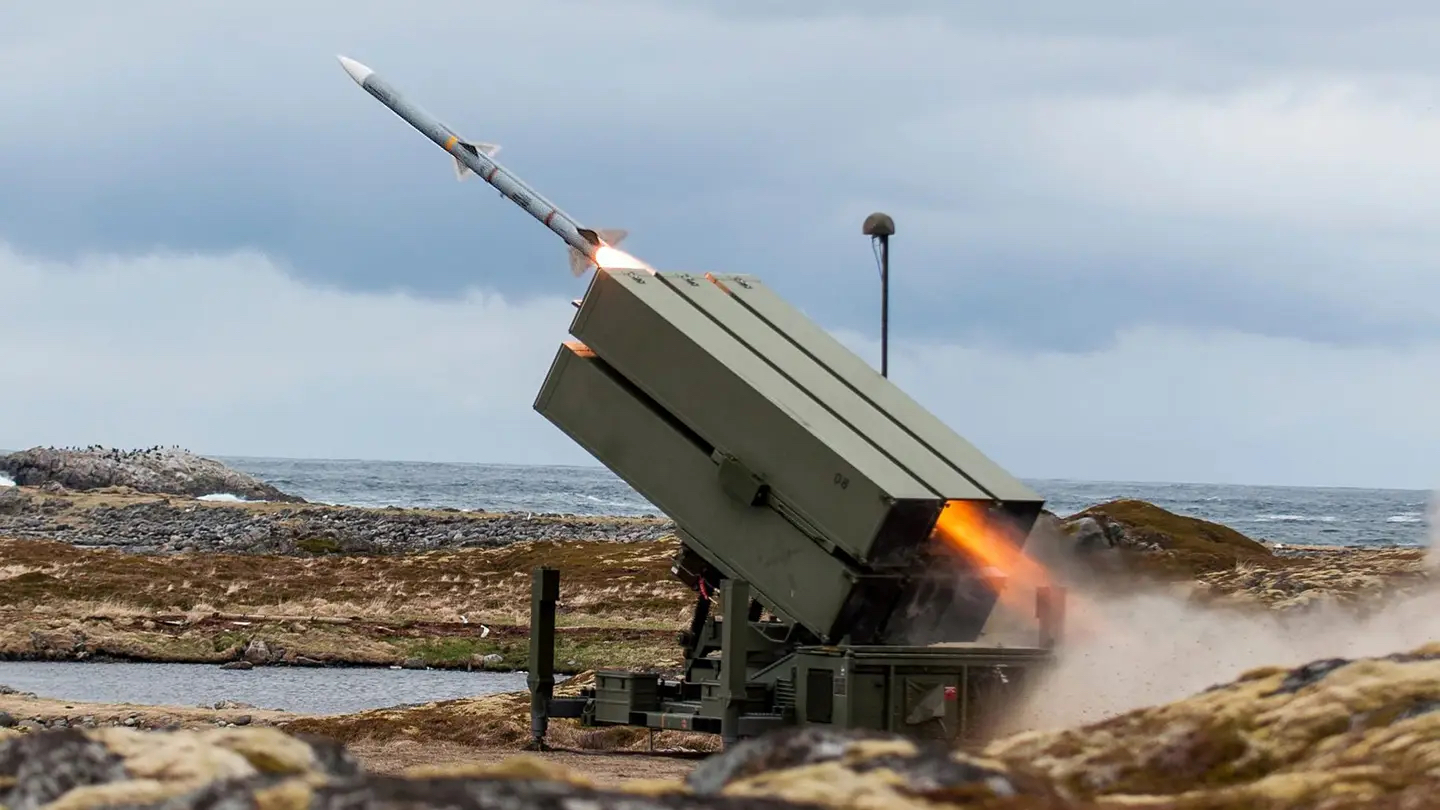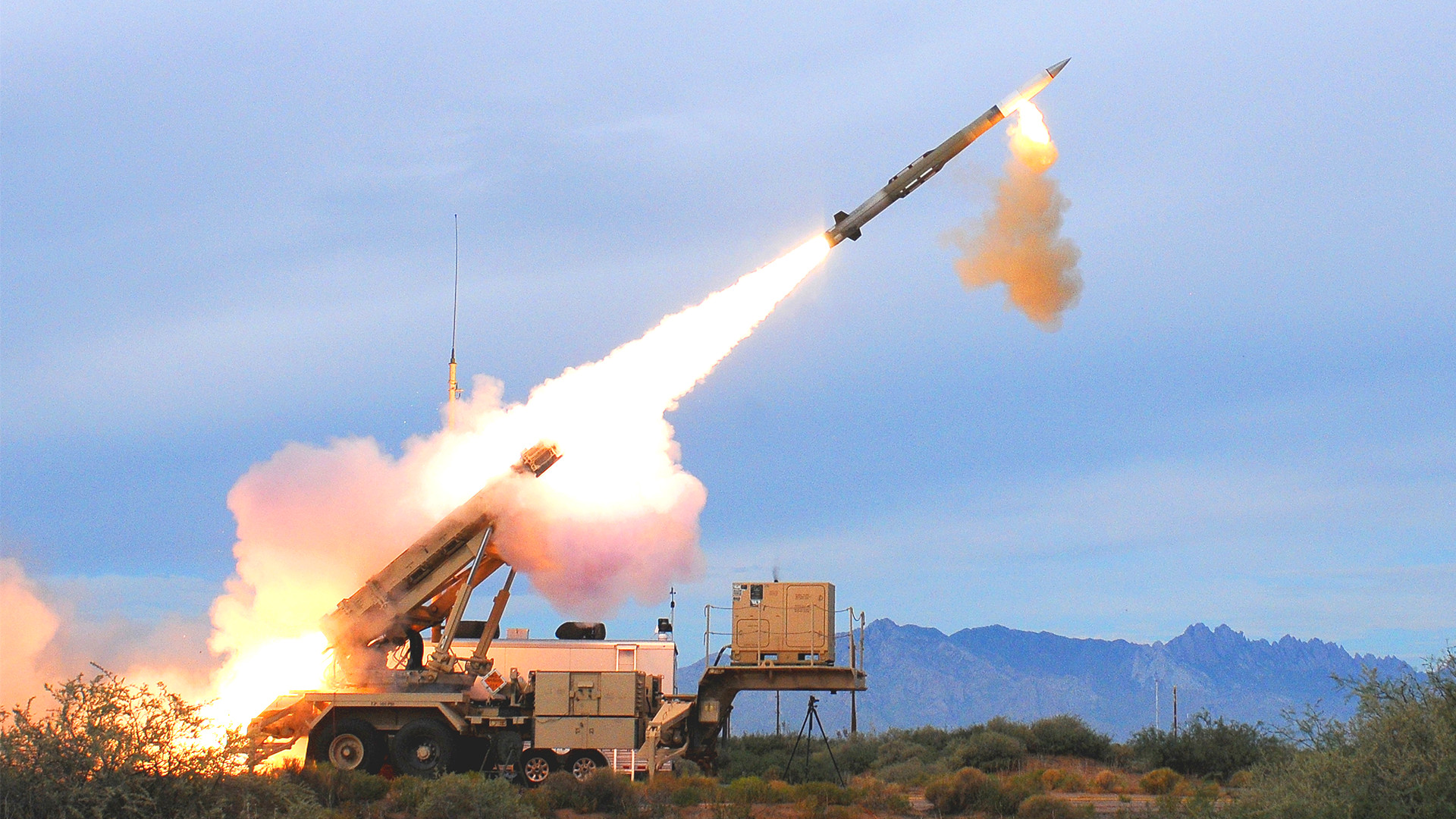Russia’s threat on Wednesday to target any Patriot surface-to-air missile systems the U.S. sends to Ukraine raises questions about the vulnerability of those systems in an active combat zone that happens to be a host country invaded by Russia.
Patriots would certainly be a target, Kremlin spokesman Dmitry Peskov said on Wednesday in response to reports that the Biden administration will likely sign off plans to ship Patriots to Ukraine. An official announcement could come as early as tomorrow.
The Patriot system would very likely be high on any Russian target list, given that even with older types of interceptors, it would be a major boon for Ukraine, which currently has little ballistic missile defense capability. Acquiring such an anti-ballistic missile capability will become dire if Iran ships hundreds of short-range ballistic missiles to Russia. The timing of such a shipment remains unclear but it could happen at any time or factors could keep it from materializing entirely.
Beyond that, Patriot would be a huge upgrade specifically to Ukraine’s long-range aerial surveillance and air defense capabilities aimed also at countering air-breathing threats like cruise missiles, aircraft, and drones, compared to the Soviet-era systems currently fielded by the country in this role. Russia is already struggling with existing Ukrainian air defenses that have done a pretty notable job of protecting the skies, keeping the Russian Air Force at bay from crossing into territory it does not control.
But the Patriot is a mainly static system that takes up a lot of space, requires a lot of troops to operate and has a radar with strong emissions that can be detected and geolocated by Russian signals intelligence systems, like those aboard IL-20 “Coot” spy planes. As such, it could be vulnerable to a wide range of Russian weapons, the ongoing use of which Patriots have never had to defend against.

“One Patriot battery with a full complement of launchers (six or more) requires 50 to 60 soldiers to emplace and then 25 to 30 soldiers to operate and maintain,” David Shank, a retired Army colonel and former commandant of the Army Air Defense Artillery School at Ft. Sill, Oklahoma, told The War Zone Wednesday afternoon. “A Patriot battery uses approximately a square kilometer of land space so it’s susceptible to Russian ISR [intelligence, surveillance and reconnaissance]. The radar when radiating emits a large signal and will ultimately be seen by Russian signal intelligence capabilities.”
You can see what a fully deployed modern Patriot battery looks like in this previous War Zone article.
A typical Patriot battery includes an AN/MPQ-53 or more capable AN/MPQ-65 phased array radar, which would be the most likely target of a Russian strike, Shank said.

“Anti-radiation missiles targeting the Patriot radar,” would likely be the main vector of attack. “Destroy the Patriot radar, and the system is useless.”
Russian fighters, like the Su-35S Flanker, can be equipped with Kh-31P long-range anti-radiation missiles which are themselves equipped with modular, interchangeable passive radar seekers, one of which was designed to specifically target the Patriot system. They have a range of 68 miles. The updated, Kh-31PD/PM, with an extended range of 160 miles, has a broadband seeker that allows it to target a wide range of anti-aircraft radars at once, which would come in handy for the Russian Air Force given the scope of additional air defense systems that could be arrayed around any Patriot battery installed in Ukraine.

Given the reluctance of the Russian Air Force to go deep into Ukrainian territory, such an attack on a Patriot that is set up around Kyiv, for instance, would most likely come from Belarus.
But using Russian fixed-wing aircraft is not the only way Moscow could seek to destroy the Patriots. Beyond SIGINT detection, given the large footprint of a Patriot battery, it would be detectable by Russian satellites as well as airborne manned and unmanned reconnaissance platforms. Other intelligence sources, including those on the ground, could also easily spot it. Once discovered, Russia has cruise and ballistic missiles and drones — including possibly Iranian-built Shaheds with anti-radiation seekers — with greater reach than any Kh-31 variant, that could go after the entire system. They would likely do this in simultaneous mass layered attacks to make defending the site much harder.
Shank said that ideally, a Patriot battery in Ukraine would be protected by counter-unmanned aerial systems (C-UAS) to defeat certain types of drones; a counter-rocket, artillery, and mortar (C-RAM) capability to defeat rockets, artillery, and mortars (if applicable depending on its proximity to enemy forces); short-range air defense systems like the Avenger/Stinger systems and medium-range ones like the National Advanced Surface-to-Air Missiles Systems, or NASAMS to counter long-range suicide drones and cruise missiles.

“In all, the best defense is an integrated network of systems, layered, and connected through a common network architecture for command/control, shared early warning, and engagement/identification authorities,” he said.
But that also requires electronic warfare/spectrum management deconfliction to ensure that friendly capabilities are not interfered with or jammed, Shank said.
So far, Shank added that he is not aware of any Patriot battery destroyed by an enemy. Certainly they have come under direct threat during the conflict in and around Yemen though. And even in Israel, where they protect against drones and missiles, they haven’t faced the quantity or quality of weapons and detection systems possessed, and currently being used, by Russia.
Modern air defense systems recently provided to Ukraine, like the U.S.-provided NASAMS and the German-provided IRIS-T SLM surface-to-air missile systems have already proven their value. Both systems, Ukrainian officials say, had a 100% hit rate in recent massive Russian missile attacks. Regardless of the accuracy of those claims, they are known to have performed exceedingly well.
Those systems, no doubt, are also high on the Russian target list. But though their radars are likewise susceptible to SIGINT detection and anti-radiation missiles, they have smaller footprints, require fewer troops and vehicles to operate and are more mobile than the Patriot system, Shank said.
Still, if nested inside layers of air defense capabilities, they would be a very tough nut to crack.
And of course, there is the issue of shooting down drones and even some missiles that cost thousands of dollars with missiles that cost millions apiece. This is nothing new, and for the time being, there is really nothing to do about this poor shot exchange ratio. Saudi Arabia is well aware of this reality, for instance, as is Israel, but the destruction these weapons cause and the potential advantages they offer the enemy unopposed is greater than the cost to intercept them. And above all else, the cost of innocent lives can’t even be factored similarly.
Regardless, all of this is likely not a concern for 2022.
Even if a Patriot battery arrived in Ukraine tomorrow, it would still take the best-trained Ukrainian air defense troops at least a month or two of “dedicated hands-on training” to be able to fully operate the system, said Shank, who used to oversee such training of U.S. air defense troops.
Regardless, if or when Patriots do arrive in Ukraine, they will become absolutely top targets for Russia — for both tactical and propaganda purposes — and we could see those systems tested via a wide array of threats like never before.
Contact the author: howard@thewarzone.com
